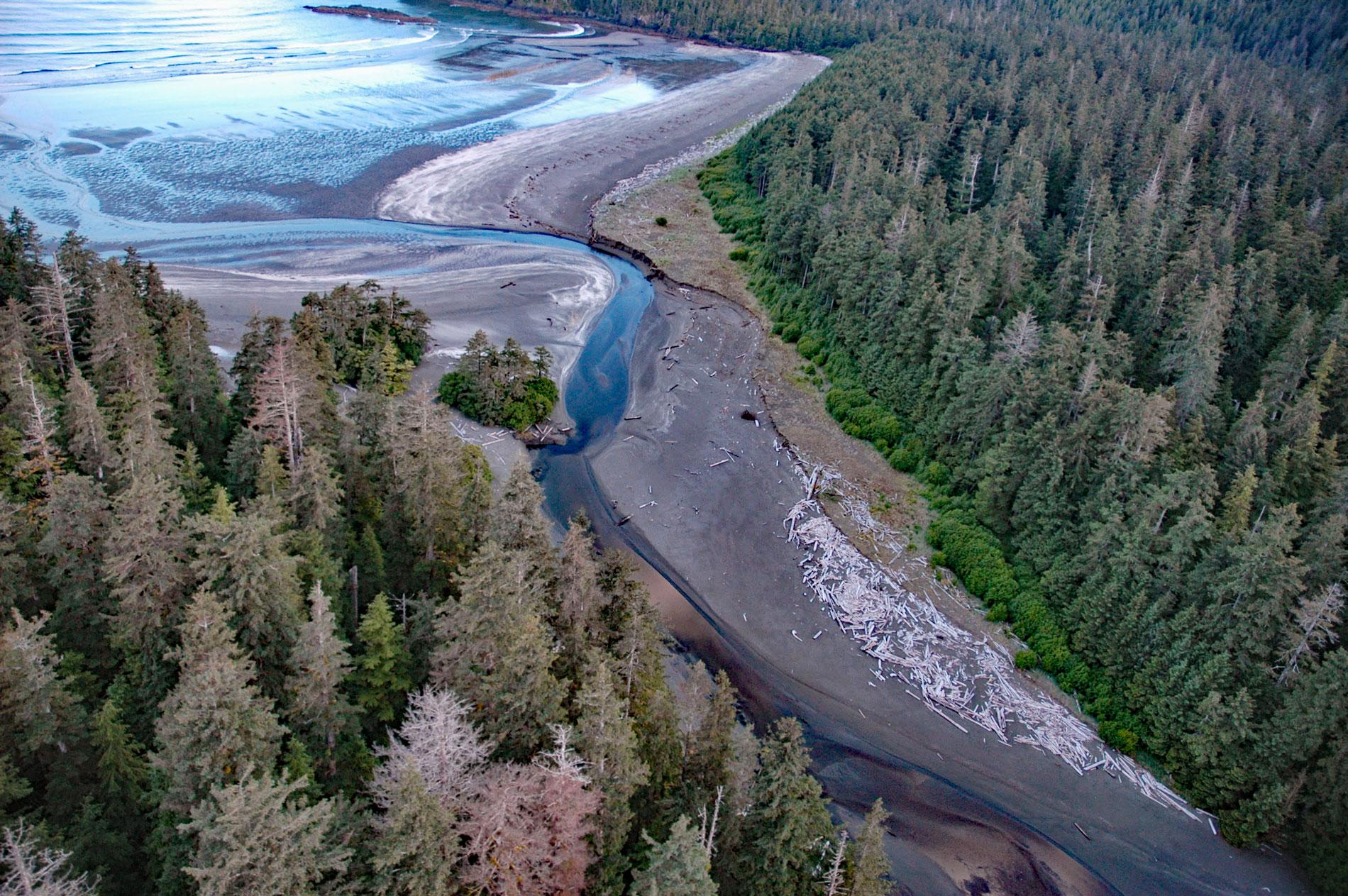Roller Bay is located on the west coast of Noyes Island near a prehistoric rock shelter on Cape Addington to the south, and Cape Ulitka to the north, about 122 miles (196 km) southeast of Sitka and 24 miles (39 km) west of Craig, Alaska. The bay was named in 1923 by the U.S. Coast and Geodetic Survey because the mouth is 2.5 miles (4 km) wide and fully exposed to squalls and rolling waves entering from the open ocean. Cape Addington, located 5 miles (8 km) southwest of Roller Bay, was named in 1794 by Captain George Vancouver for Henry Addington, who was Speaker of the House of Commons at that time and served as Prime Minister of the United Kingdom from 1801 to 1804. Noyes Island is about 7 miles (11 km) across, located in the Gulf of Esquibel off the west coast of Prince of Wales Island and is within the Tongass National Forest. The island was named in 1879 by William H. Dall for William M. Noyes who was stationed in Alaska with the U.S. Coast and Geodetic Survey from 1873 to 1880. Noyes Island is part of the Prince of Wales Archipelago which represents the Alexander terrane, a tectonic accretionary complex consisting of a volcanic island arc, turbidites, siliceous shale, chert, and limestone. The Port San Antonio Fault runs through the base of Cape Addington and separates the volcanic basalt rocks of Noyes Island from the limestone of Cape Addington. The limestone is readily erodible by waves and dissolution creating a karst topography and a locally extensive cave system.
Several large sea caves occur on Cape Addington, and many are now above sea level and no longer affected by waves. As glaciers started melting towards the end of the Last Glacial Maximum, the relative sea level rose and peaked about 9,000 years ago at 30 feet (10 m) above the present level. The release of pressure from the melting ice triggered an on-going isostatic rebound of the earth’s crust, lowering the relative sea level, and elevating the sea caves. One sea cave at Cape Addington has a main entrance 100 feet (30 m) wide and 50 feet (15 m) high, and several smaller entrances are connected by a series of archways. The cave is 50 feet (15 m) above present mean sea level and extends 246 feet (75 m) into the limestone cliff where cavers discovered a whale bone that was dated to about 5,000 years ago. In 1994, a sea cave was discovered on Cape Addington with a deep shell midden deposit about 52 feet (16 m) above sea level. In 1997, an archaeological excavation was accomplished, and the results suggest that the cultural deposit is no older than 2,000 years and that the sea cave was mostly occupied from about 50 to 1500 AD.
The midden at Cape Addington yielded a large faunal assemblage with the large mussel Mytilus Californianus being the most abundant shellfish species. The most common mammals, fishes, and birds were deer, harbor seal, halibut, salmon, Pacific cod, eagle, and albatross. The earliest activities, from 50 to 260 AD, were halibut fishing, deer hunting, and fur seal hunting. From 260 to 660 AD, Pacific cod bones suggest occupation of the sea cave in the spring when these fish are most abundant. Sea otter remains were dated from 660 to 860 AD, and salmon and halibut fluctuated in relative abundance, but both were the focus of fishing after 1000 AD. During some years, the site may have been occupied for only a few weeks, in other years, perhaps not at all. The midden data could not be used to determine the ethnicity of the cave occupants. Noyes Island is in the traditional territory of both the Tlingit people and the Kaigani Haida, depending on which source is consulted and the foods consumed are not sufficiently distinctive. Read more here and here. Explore more of Roller Bay and Noyes Island here:

